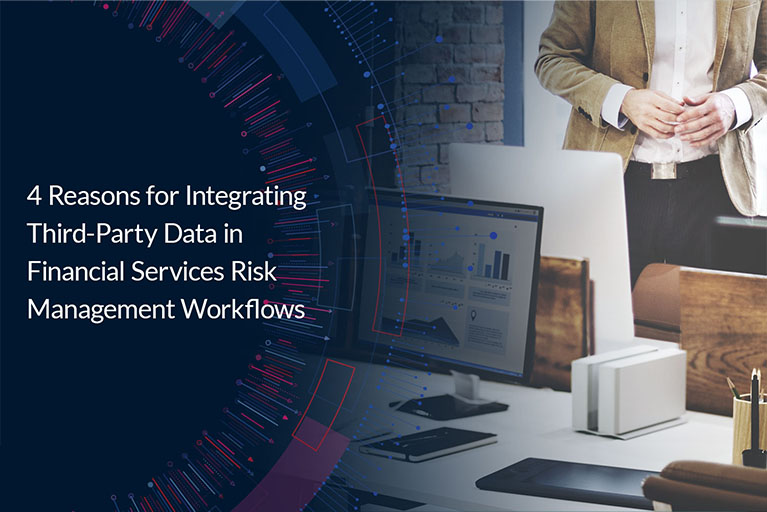Business consultants know that good strategy starts with good data. Whether you’re advising on market entry, growth opportunities, or competitive positioning, clients expect your recommendations to be...
Large Language Models and generative AI tools have transformed the way organisations bring order to the vast amount of online and offline data available. AI can narrow down this data universe to a concise...
Artificial intelligence (AI) offers an incredible amount of opportunity from enhancing productivity to managing information. But, because AI "learns" from the data you give it, it's critical to develop...
Generative Artificial Intelligence (GenAI) stands as a transformative force in the digital landscape, promising innovative solutions and creative approaches to data synthesis. However, GenAI faces its...
ChatGPT and Bard, DALL-E and Starryai: Generative AI (GenAI) tools are taking the world by storm, igniting conversations, and shaping future possibilities in ways we've only begun to explore. As the World...

Recent volatility in the financial services sector only reinforces how interconnected and complex global markets have become. Geopolitical and economic uncertainty, coupled with expanding regulation, makes navigating the turbulence even more challenging. Global consultancy EY notes that “Data has an increasingly important role within financial crime risk management.” To get ahead of the curve, financial institutions increasingly integrate news, regulatory, legal, and other alternative data into their risk management processes. What benefits do organizations gain from harnessing third-party data?
Implement enhanced risk detection for greater resilience
The world is interconnected, and global news data provides a snapshot of the events and developments taking place in various regions. Monitoring and analyzing this data allows you to identify emerging risks, political instability, economic changes, and other factors. This allows you to make well-informed decisions and take proactive measures to mitigate potential risks.
Conduct more comprehensive risk assessments
Whether you’re evaluating the risk of a potential new partner or an investment portfolio, third-party data can help you paint a more complete picture of reputational, regulatory, financial and strategic risk.
You can ingest ESG-related news, for instance, to gain insights into whether an entity is living up to its environmental, social and governance commitments. As ESG has risen to prominence, so too has the reputational risk of doing business with entities or individuals that fall short of expectations.
In addition, an adverse media feed aligned with your specific risk considerations narrows big data to the most relevant information, so you can quickly spot red flags related to your business relationships,investment portfolios, or strategic plans.
Similarly, company data including corporate hierarchies and financial information enables you to look for signs of financial instability or beneficial ownership that warrants additional due diligence.
Ingest global news data for comprehensive due diligence checks
Regulatory bodies around the world emphasize the importance of risk-aligned due diligence, be it for preventing financial crimes like fraud, money laundering and terrorist financing, putting the brakes on bribery and corruption, or addressing a growing array of environmental and social sustainability goals.
Integrating specific types of third-party data into your due diligence offers benefits beyond verifyiResearch by Accentureng self-reported data from the third parties. Third-party data can also help financial institutions streamline their due diligence processes by providing access to information that might otherwise require significant time
and resources to gather.
By automating certain aspects of the due diligence process through the use of third-party data sources and robotic process automation, financial institutions can free up their staff to focus on more complex analysis and decision-making.
For example, ingesting near real-time news data for due diligence enables you to promptly identify potential risks associated with third parties you do business with. Timely information helps you make informed decisions before entering relationships with individuals or entities or take proactive measures to mitigate exposure to potential financial, reputational, or legal damage.
And there’s a bonus: Just as real-time news data can alert you to potential risks, it can also highlight emerging opportunities. By staying informed about market trends, industry developments, and competitive landscapes, you can capitalize on timely opportunities and make strategic decisions to gain a competitive edge.
Strengthen sanctions compliance
The global sanctions landscape has undergone rapid changes since 2022. FinTech Futures notes, “In fact, in the latter part of 2022, sanctions were updated weekly, and sometimes even daily. The UK amended its Russian Sanctions Regulations 16 times in the last year alone and, in the three months leading up to November 2022, a total of 63 sanctions updates were made across the UK and EU.” As a result, ensuring compliance, especially if you offer financial services across multiple jurisdictions, demands constant vigilance.
Accessing global sanctions, watchlist, and Politically Exposed Persons (PEPs) list data via an API offers much greater efficiency over manually pulling data from multiple authorities. This data can be used as part of enhanced due diligence as well as on-going monitoring to help you keep pace with a fast-moving sanctions landscape. Of course, sanctions are just one piece of the compliance puzzle in the highly regulated financial services industry.
Regulatory bodies often issue updates, guidelines, or changes to existing regulations. Data aggregated from current broadcast, print and web news sources—along with regulators’ own publishing channels—can help organizations stay informed about these changes, allowing you to adapt your risk management processes as regulatory requirements change.
Not all data is equal
According to research by Accenture, 48% of organizations use big data and analytics to strengthen compliance and risk management. That number is only going to rise because the complexity of risk today demands processes that can be automated for greater efficiency and effectiveness.
When sourcing third-party data, consider Nexis® Data as a Service. Our data universe spans global news, company and financial information, legal and regulatory data, and more. More importantly, our aggregated data is enriched with index tags and other metadata to make it easier to filter out the noise and find relevant data to help you mitigate risk.
Learn more about Nexis Data as a Service.
Get in touch
Email: information@lexisnexis.com
Telephone: +31 (0)20 485 3456